The following is a commentary-free summary of John Hight’s The First 30 Years of ‘Warcraft’: The Making of a Game Universe presentation at GDC 2024. INVEN, a Korean gaming website, first published this in Korean. I translated it into English, summarized it, and made it more readable.
Up until recently, Hight was the General Manager of the newly branded Warcraft franchise for Blizzard. He is now president of Wizards of the Coast.
Here’s some history about his background: John Hight, who previously worked at EA and SCEA, and contributed to the development of titles like God of War and Command & Conquer: Red Alert, joined Blizzard in 2011. Since then, he has been instrumental in the Warcraft franchise, overseeing the console port of Diablo 3, producing World of Warcraft, and, since 2021, leading the entire Warcraft franchise as General Manager.
The video of the presentation is only available to members at the GDC website. Membership costs a whopping $649 US per year which is cost prohibitive for most people. Hopefully, someday they will release this as a free video on YouTube.
The 30th Anniversary of Warcraft
Hight described Warcraft, celebrating its 30th anniversary, as a wonderful world that brings joy to its players. He emphasized that over the years, Warcraft has become a cultural phenomenon, uniting people from different languages and cultures under a shared worldview.

Starting as an RTS game, Warcraft evolved into World of Warcraft, taking the online gaming community to new heights. However, the journey hasn’t always been smooth. Recently, Blizzard has faced criticism from fans for diverging from what they wanted.
At GDC 2024, Hight reflected on Warcraft’s 30-year history, discussing how the franchise has engaged with its fans, the reasons behind the recent dissatisfaction, the changes Blizzard implemented to address these issues, and how they managed to regain the trust of their community.
Blizzard’s Vision for Warcraft
Blizzard’s goal has always been clear:
BUILD A FANTASY UNIVERSE THAT DELIGHTS AND CONNECTS EVERYONE, EVERYWHERE.
This vision is built on the following principles:
- A fantasy universe with a world where magic and compelling stories captivate players.
- Fun, offering quirky entertainment that is thrilling but not necessarily dark.
- Connections, fostering player interaction, cooperation, and sometimes competition.
- Inclusiveness, creating an environment where all players can participate, regardless of region, platform, or media type.
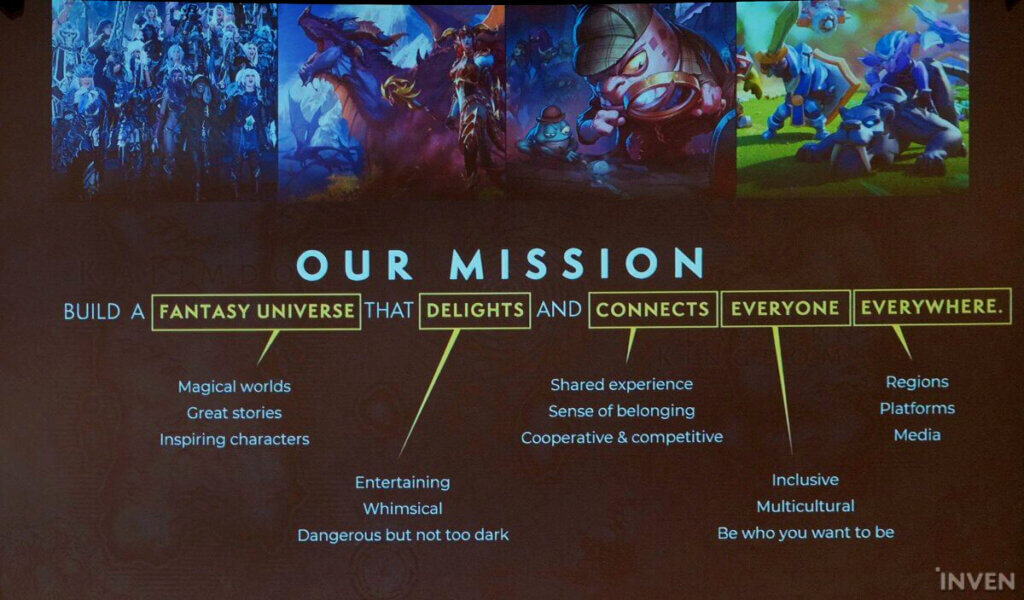
Thirty years after its launch in 1994, Warcraft continues to expand and tell new stories, staying true to this vision.
Warcraft: A High-Fantasy RTS
Warcraft began as a three-part real-time strategy (RTS) game, telling the story of the orc invasion of Azeroth. At a time when RTS games were typically centered on science fiction or military themes, Warcraft stood out by embracing a fantasy setting. This unique approach, combined with the focus on both solo campaigns and player-versus-player battles, set Warcraft apart.
As gaming technology evolved from 2D to 3D, Warcraft adapted, allowing for more dynamic storytelling through enhanced camera movement and visuals. This transition was critical to conveying the rich world of Warcraft, which later even inspired a movie.
Another key feature was the game editor, which allowed players to create new games and stories. This innovation led to the development of popular mods like Dota, which in turn spawned new genres like MOBA and tower defense.
The Rise of World of Warcraft
Blizzard expanded Warcraft with a simple yet profound question: “What if the player becomes each character in the army?” This idea led to World of Warcraft (WoW), an MMORPG that allowed players to fully immerse themselves in the Warcraft universe.
WoW offered unprecedented opportunities for player interaction in a 3D world, fostering connections through activities like raiding, dungeon crawling, and leveling up. The game’s expansion packs, which continued to build on the original content, were hugely successful, creating a passionate fan community.
To cater to nostalgia, Blizzard introduced World of Warcraft Classic, allowing players to relive past experiences. Despite the challenges of restoring old data, this effort helped rejuvenate the community and brought new life to the game.
Expanding Warcraft to New Platforms
The success of Warcraft as an RTS and MMORPG led to the creation of Hearthstone, a digital trading card game based on the various classes of WoW. Initially a risky venture, Hearthstone became a massive success, amassing 150 million players, 18.5 billion hours played, and 158 billion games over its 10-year history.
The mobile success of Hearthstone prompted Blizzard to rethink mobile gaming as a platform, leading to the development of Warcraft Rumble, a new, more accessible entry in the Warcraft universe.
The Philosophy Behind Warcraft’s Success
Warcraft’s success over 30 years can be attributed to five key factors:
- Setting: Unlike sci-fi, Warcraft’s setting is rooted in familiar medieval fantasy, making it accessible to a broad audience.
- Visual Style: The game’s stylized presentation transcends generations, avoiding both excessive realism and overly childlike aesthetics. This unique look has become a hallmark of the franchise.
- Story: A strong narrative connects players to the game, driving them to stay engaged from start to finish.
- Gameplay Evolution: While staying true to the genre, Blizzard has consistently made Warcraft more accessible by simplifying complexity and introducing new ways to play.
- Community: The community is the lifeblood of the game. A strong player base not only sustains the game but also grows with it, forming a vibrant community that transcends cultural differences. Blizzard has prioritized keeping this community engaged through regular content updates.
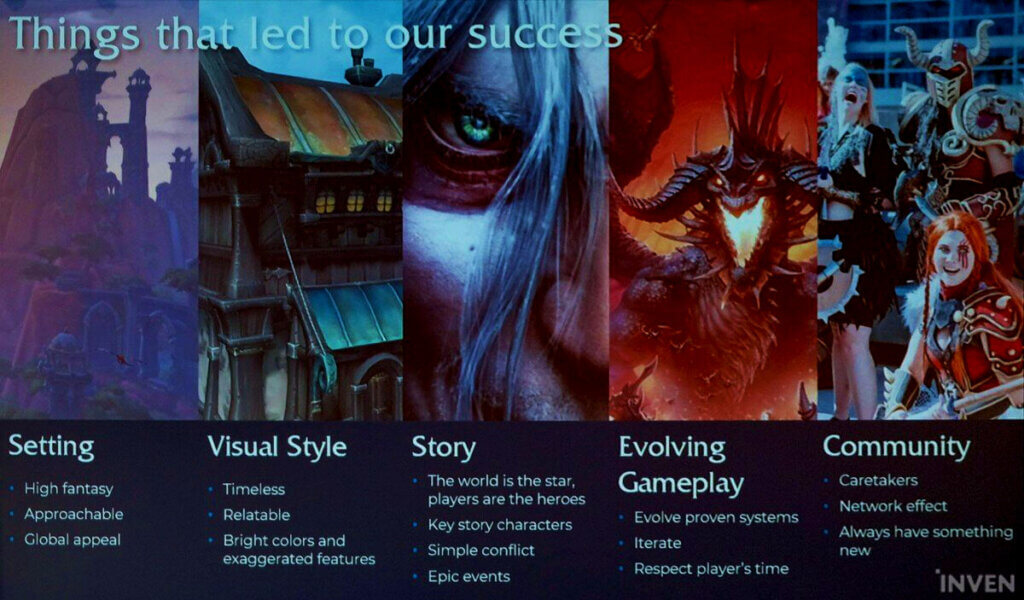
The Challenges of Sustaining WoW’s Popularity
World of Warcraft maintained a strong subscriber base through expansion packs. However, recent expansions, such as Shadowlands, faced significant player churn. Despite some recovery with Dragonflight, the subscriber base did not return to previous levels.
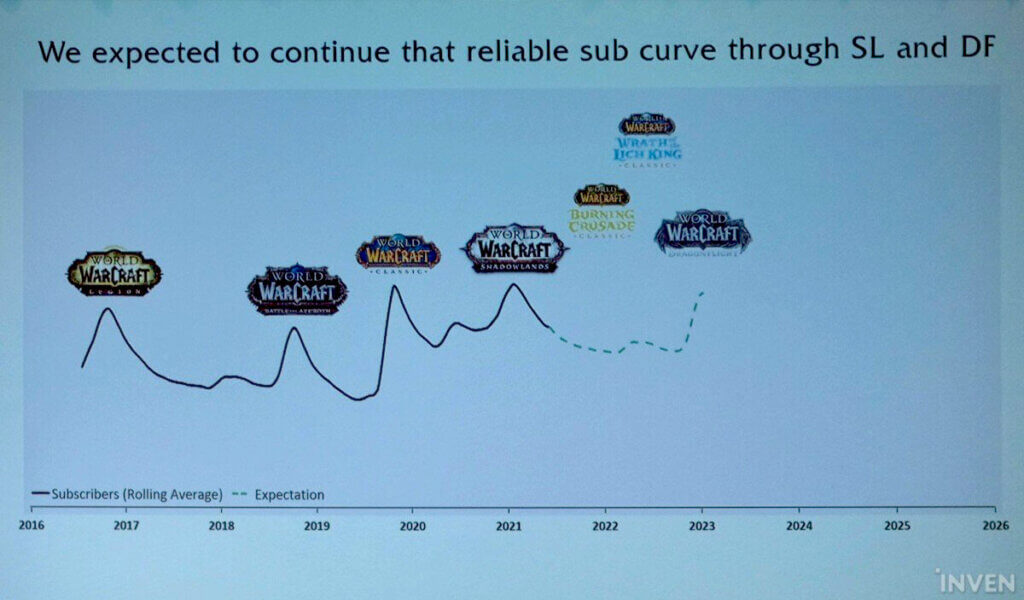
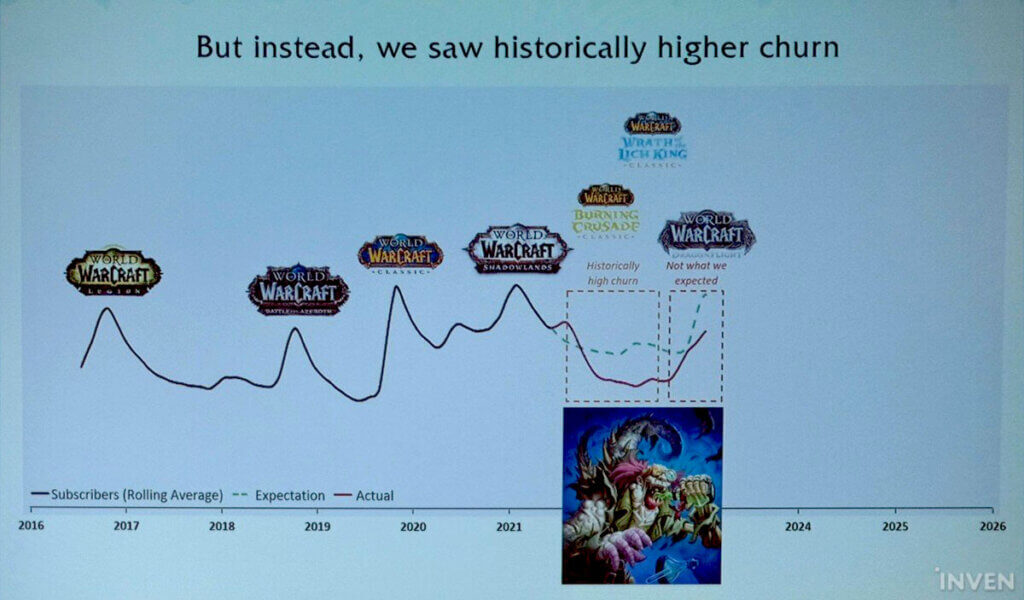
Blizzard recognized that they had lost touch with their fanbase. Through surveys and direct communication, they discovered that many of the elements they once believed were keys to success were now seen as flaws by the community.
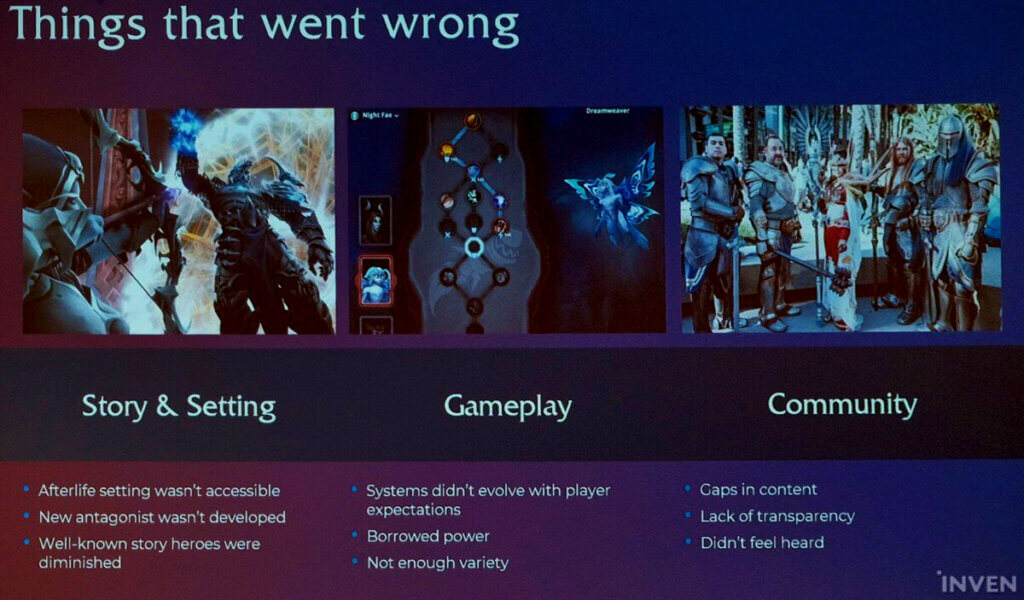
Revitalizing Warcraft with Player Feedback
In response, Blizzard began reorienting the game around player feedback rather than developer-driven goals. This shift included a return to high fantasy with deeper, more cohesive storytelling, as seen in the World Soul Epic expansion. They also introduced more frequent updates, detailed roadmaps, and improved gameplay mechanics like dragon riding.
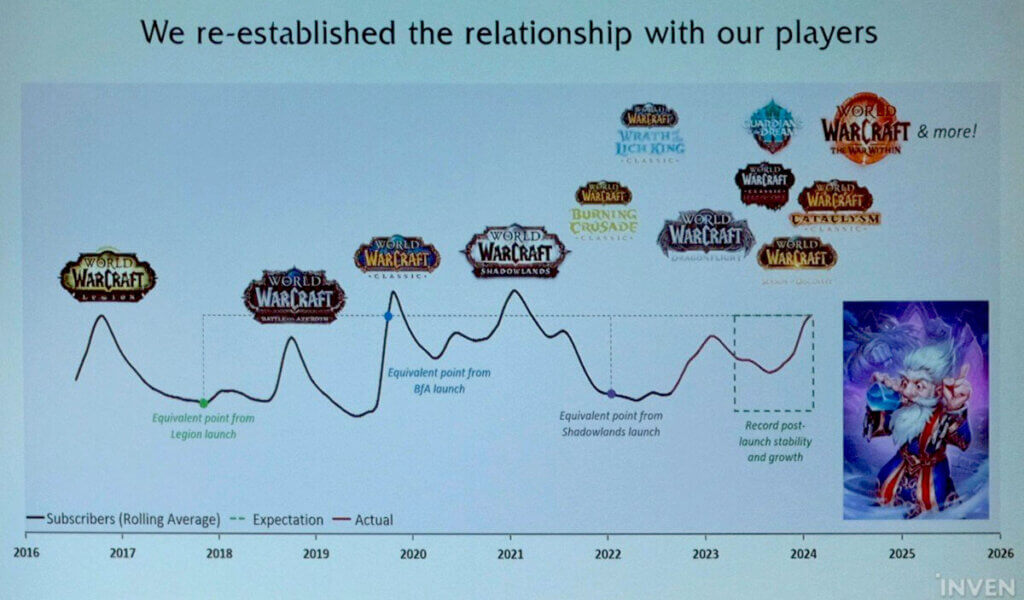
These efforts have slowed the decline in subscribers and have led to a higher rate of recovery with each update.
Conclusion
John Hight concluded his GDC 2024 speech by reflecting on the lessons learned over Warcraft’s 30-year history. He emphasized that players desire evolution but still don’t want to leave the games they love. Blizzard is committed to giving them reasons to stay, ensuring that World of Warcraft continues to thrive for years to come.
Blizzard is now focused on changing how World of Warcraft operates, after nearly 20 years of the same approach, by listening to players and implementing the changes they want. This player-centered approach is the foundation for creating the future of the Warcraft franchise.



Wizards of the Coast have become full woke. Already before Hight.
WotC absorbed TSR (basically Dungeons & Dragons, roleplaying stuff) and has Magic: The Gathering as well-known collectible cards flagship.
They started out as NERDS, as gamers, as fans of their genres. They went maybe even more woke than Blizzard.
They are not run by any of the founders anymore. Neither company. Just did a quick check for Wizards but might be wrong.
I really hate this so much: A nerdy franchise becomes big and then so much gets interpreted into it in hindsight. And quite falsified. “… uniting people from different languages and cultures under a shared worldview.” This is big brass no ass talk, the usual corporate mumbo jumbo bull.
Yes, WoW was a worldwide phenomenon that even spilled over into China somewhat. It worked out better than anyone ever imagined.
I find it interesting how much surveys and soul searching is needed for the later generation to ape the success of the original makers they ousted to horribly after that Cosby suite nonsense.
This whole posting sounds very negative about Hight. I didn’t quite intend that, though I cannot deny that I am not a fan of how things are run these days. He does/did quite a good job, he is just not one of the guys who made WoW the success it became.
Also let me point out how these curves are again so nicely adjusted to tell the story he wants. One can still clearly see how WoW classic saved modern WoW by getting counted for the subscription numbers as well…^^
What is undisclosed how much got lost from modern WoW and how WoW Classic subs would fare separately, but we are unlikely to get this data anytime soon if ever.
“They are now listening to players” -> is this always the end? THAT phrase doesn’t inspire confidence.
Apple didn’t create the iPhone by listening to the people. They created something the people didn’t even know they would love.
Let’s see how WoW will fare by corporate management with a fair touch of woke and old Metzen is supposed to save the entire show. They can’t hire their disgraced old Blizzard team members anymore, after all.
My stance regarding WoW: Battle for Azeroth already totally lost me, I did not even want to touch Shadowlands, which was apparently even worse than I imagined, and really, nothing about Dragonflight made me want to try again.
But well, guess they need new players, let’s see how the next expansion works out for them.
I think their goal is to take over every popular franchise and make it woke and keep doubling down for as long as needed. Maybe they think that if they push the woke propaganda long enough, the majority of people will finally start to think of it as the new normal.
I really hope this doesn’t happen and instead cause them to both lose a lot of money and still turn the majority of people off. I have completely stopped paying attention to new games or movies, I play several old games, very rarely watch movies, maybe less than 5 times per year and now I started realizing how American movies, music and overall culture has spread all over the world like a cancerous growth, so I’m trying to make a conscious effort to stop consuming American things and instead replace them with content from other cultures, as difficult as it is. I don’t really have anything against America, but I’m realizing how scary it is that only this culture has spread everywhere and has overshadowed and consumed almost everything else and I don’t think this is normal or harmless.
I recently watched an excerpt of some video of what Mainland Chinese people think of USA, and someone put it very well – American movies promote individualism, where everyone is a special and unique snowflake, while Chinese (and other non-Western cultures) movies promote unity and that people are the same, which I’m starting to believe. We are really all the same – have the same fears, same problems, same desires and dreams, it’s the Western culture that tries to spread the fallacy that everyone is unique and special, this results in isolation among people, because they start thinking of themselves as too special or better for everyone else, teaches them to be prideful, which is a sin.
Allywnd said– “I have completely stopped paying attention to new games or movies, I play several old games, very rarely watch movies, maybe less than 5 times per year and now I started realizing how American movies, music and overall culture has spread all over the world like a cancerous growth”
Right there with ya. I –carefully– curate what I consume now and am very wary of anything current year. Everyone I know, sadly, just consooms product and it shows because their brains have been reprogrammed and are totally rotted with woke shit. These are people I’ve known decades in many cases. They either do not see it in some cases, or see it but are simply herd animals like most humans and are just doing it to be socially acceptable.
I am spending part of my time out of the States now in a country that is -just- starting to tilt towards woke f-ckery and I will be spending most of my time there telling people to be -very- careful because the end of the road for them is not pretty. They snuck this in on us over decades of boiling the frog, but it need not happen other places and I will actively attempt to thwart it where I can.